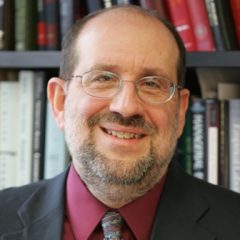Berkeley scientist Noah Whiteman’s Most Delicious Poison argues that often chemicals that are therapeutic at low doses are poisons at high doses. The commentary quoted below provides evidence that what Whiteman argues is true of many chemicals, is also true of radiation.
(p. D3) This spring [2015], four years after the nuclear accident at Fukushima, a small group of scientists met in Tokyo to evaluate the deadly aftermath.
No one has been killed or sickened by the radiation — a point confirmed last month by the International Atomic Energy Agency. Even among Fukushima workers, the number of additional cancer cases in coming years is expected to be so low as to be undetectable, a blip impossible to discern against the statistical background noise.
But about 1,600 people died from the stress of the evacuation — one that some scientists believe was not justified by the relatively moderate radiation levels at the Japanese nuclear plant.
. . .
“The government basically panicked,” said Dr. Mohan Doss, a medical physicist who spoke at the Tokyo meeting, when I called him at his office at Fox Chase Cancer Center in Philadelphia. “When you evacuate a hospital intensive care unit, you cannot take patients to a high school and expect them to survive.”
Among other victims were residents of nursing homes. And there were the suicides. “It was the fear of radiation that ended up killing people,” he said.
Most of the fallout was swept out to sea by easterly winds, and the rest was dispersed and diluted over the land. Had the evacuees stayed home, their cumulative exposure over four years, in the most intensely radioactive locations, would have been about 70 millisieverts — roughly comparable to receiving a high-resolution whole-body diagnostic scan each year. But those hot spots were anomalies.
By Dr. Doss’s calculations, most residents would have received much less, about 4 millisieverts a year. The average annual exposure from the natural background radiation of the earth is 2.4 millisieverts.
How the added effect of the fallout would have compared with that of the evacuation depends on the validity of the “linear no-threshold model,” which assumes that any amount of radiation, no matter how small, causes some harm.
Dr. Doss is among scientists who question that supposition, one built into the world’s radiation standards. Below a certain threshold, they argue, low doses are harmless and possibly even beneficial — a long-debated phenomenon called radiation hormesis.
. . .
Life evolved in a mildly radioactive environment, and some laboratory experiments and animal studies indicate that low exposures unleash protective antioxidants and stimulate the immune system, conceivably protecting against cancers of all kinds.
. . .
. . ., a study of radon by a Johns Hopkins scientist suggested that people living with higher concentrations of the radioactive gas had correspondingly lower rates of lung cancer. If so, then homeowners investing in radon mitigation to meet federal safety standards may be slightly increasing their cancer risk. These and similar findings have also been disputed.
. . .
There is more here at stake than agonizing over irreversible acts, like the evacuation of Fukushima. Fear of radiation, even when diluted to homeopathic portions, compels people to forgo lifesaving diagnostic tests and radiotherapies.
We’re bad at balancing risks, we humans, and we live in a world of continual uncertainty. Trying to avoid the horrors we imagine, we risk creating ones that are real.
For the full commentary, see:
George Johnson. “RAW DATA; When Radiation Isn’t the Risk.” The New York Times (Tuesday, Sept. 22, 2015 [sic]): D3.
(Note: ellipses added.)
(Note: the online version of the commentary has the date Sept. 21, 2015 [sic], and has the title “RAW DATA; When Radiation Isn’t the Real Risk.”)
The recent book by Whiteman mentioned above is:
Whiteman, Noah. Most Delicious Poison: The Story of Nature’s Toxins―from Spices to Vices. New York: Little, Brown Spark, 2023.
The study of radon mentioned above is:
Thompson, Richard E. “Epidemiological Evidence for Possible Radiation Hormesis from Radon Exposure: A Case-Control Study Conducted in Worcester, Ma.” Dose-Response 9, no. 1 (2011): 59-75.

